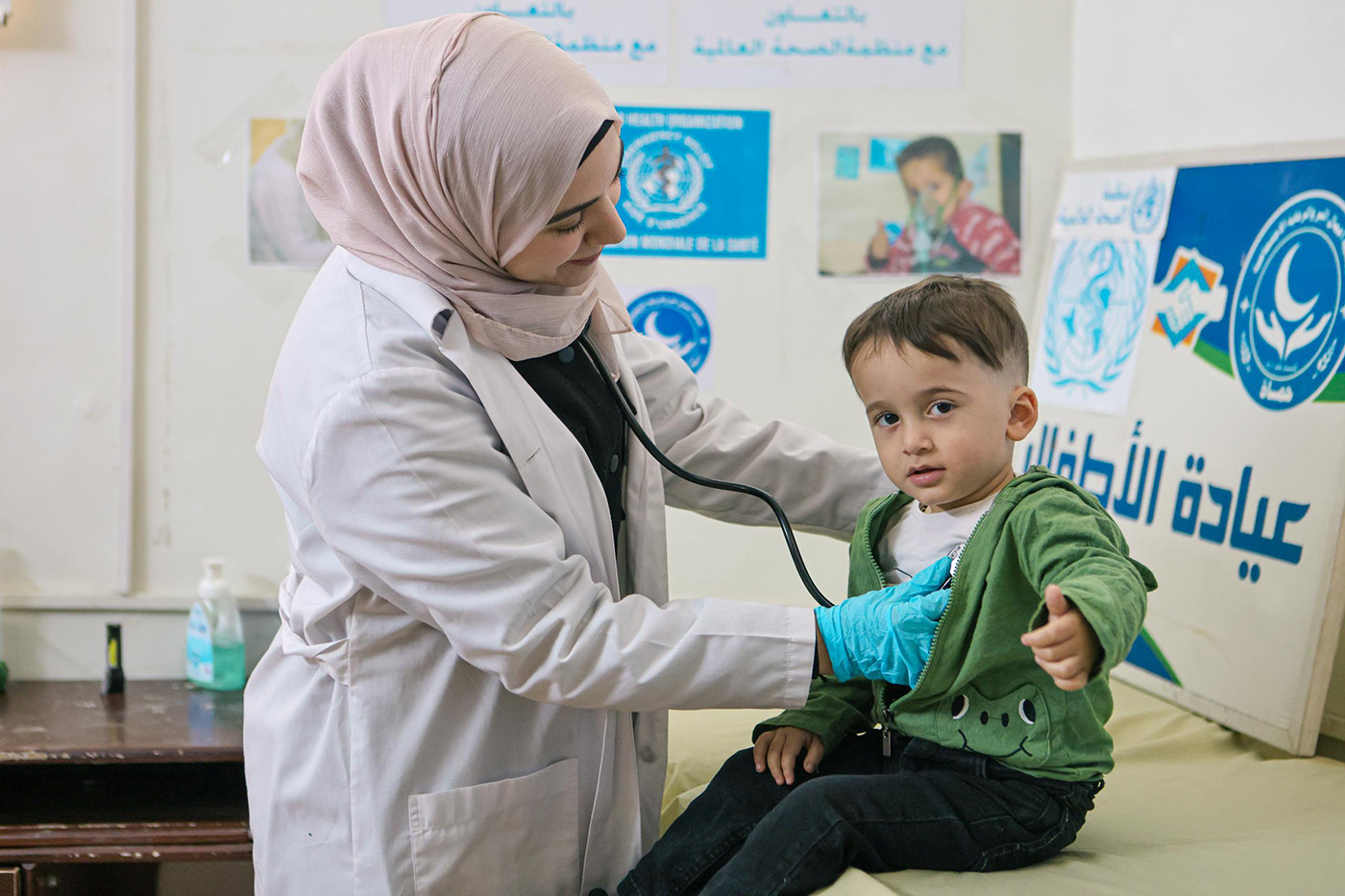 Pediatric nurse Razan examines a young patient at a clinic in Homs, where she treats children with signs of malnutrition. Photo: WHO8 April 2025, Syrian Arab Republic – In the busy corridors of Al Amal Pediatric and Maternity Hospital in Azaz, Aleppo, every available chair — and many floor corners — have become makeshift waiting areas and treatment spaces. Nurses administer IV drips on benches; consultations take place wherever a bit of free space can be found. Overcrowding is the new normal. The outpatient and maternity services are running at over 30% above their intended capacity.
Pediatric nurse Razan examines a young patient at a clinic in Homs, where she treats children with signs of malnutrition. Photo: WHO8 April 2025, Syrian Arab Republic – In the busy corridors of Al Amal Pediatric and Maternity Hospital in Azaz, Aleppo, every available chair — and many floor corners — have become makeshift waiting areas and treatment spaces. Nurses administer IV drips on benches; consultations take place wherever a bit of free space can be found. Overcrowding is the new normal. The outpatient and maternity services are running at over 30% above their intended capacity.
But this surge isn’t only a crisis. It’s also a sign of hope. Following recent political developments in December, and the removal of a frontline that had separated communities for years, families from Aleppo city can now reach Azaz more safely. Many have come seeking quality maternity and pediatric care — and to reunite with relatives after years apart.
They didn’t come because they were fleeing. They came because they finally could. What many may not know is that this hospital — like 246 others across northwestern and northeastern Syria – is at risk of shutting down.
Asliya’s choice
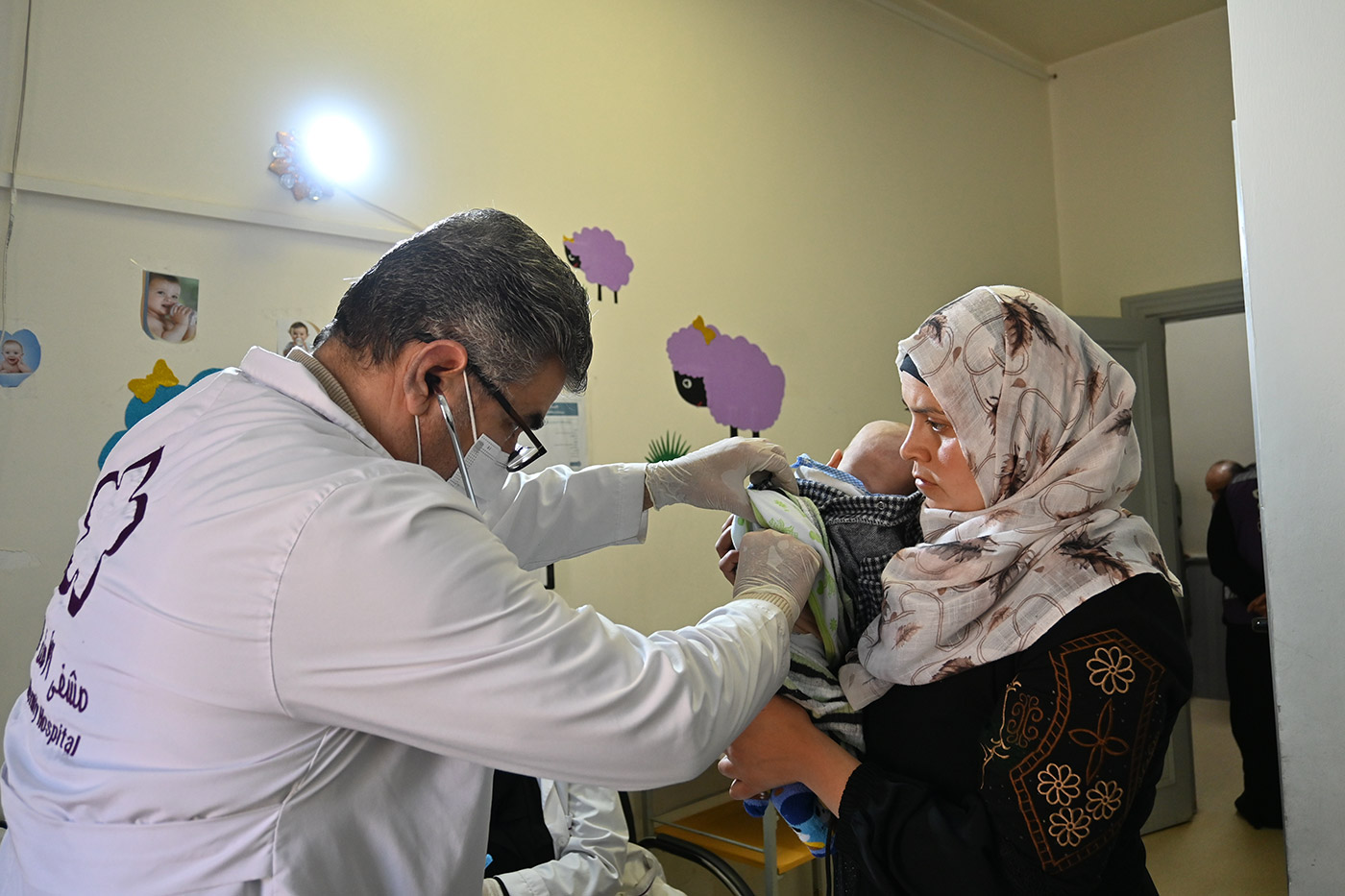 Asliya Al-Hamoud holds her 2-month-old son as Dr. Mohammed Al Hamed, a pediatrician at Al Amal Hospital, conducts a follow-up check-up. Photo: WHOWhen Asliya Al-Hamoud, 29, arrived at Al Amal with her two-month-old son Ahmad, she was terrified. He had a persistent cough. Within days, it progressed to pneumonia. Doctors admitted him immediately.
Asliya Al-Hamoud holds her 2-month-old son as Dr. Mohammed Al Hamed, a pediatrician at Al Amal Hospital, conducts a follow-up check-up. Photo: WHOWhen Asliya Al-Hamoud, 29, arrived at Al Amal with her two-month-old son Ahmad, she was terrified. He had a persistent cough. Within days, it progressed to pneumonia. Doctors admitted him immediately.
“They told me, ‘Don’t worry. We’ll treat him freely,’” she recalls, her voice trembling. She stayed in the hospital for a week. By the time she left, Ahmad’s breathing had steadied — thanks to free medication and round-the-clock care.
A mother of five, Asliya has been displaced twice — first from Deir-ez-Zor in 2017, and again from Eastern Ghouta in 2020. She compared her experience at Al Amal with a previous visit to a private hospital that charged her 150 USD. “We can’t afford that on a monthly household income of less than 200 USD,” she says. “If we can keep supporting public hospitals with medicines, we won’t need to go to private pharmacies.”
Today, more than half of Syria’s health facilities are non-functional. Only 57% of hospitals and 37% of primary healthcare centers remain fully operational. While medical services struggle with shortages in supplies and outdated equipment, families like Asliya’s are also burdened by rising living costs, making it harder to access or afford consistent care.
Hadiya’s hands
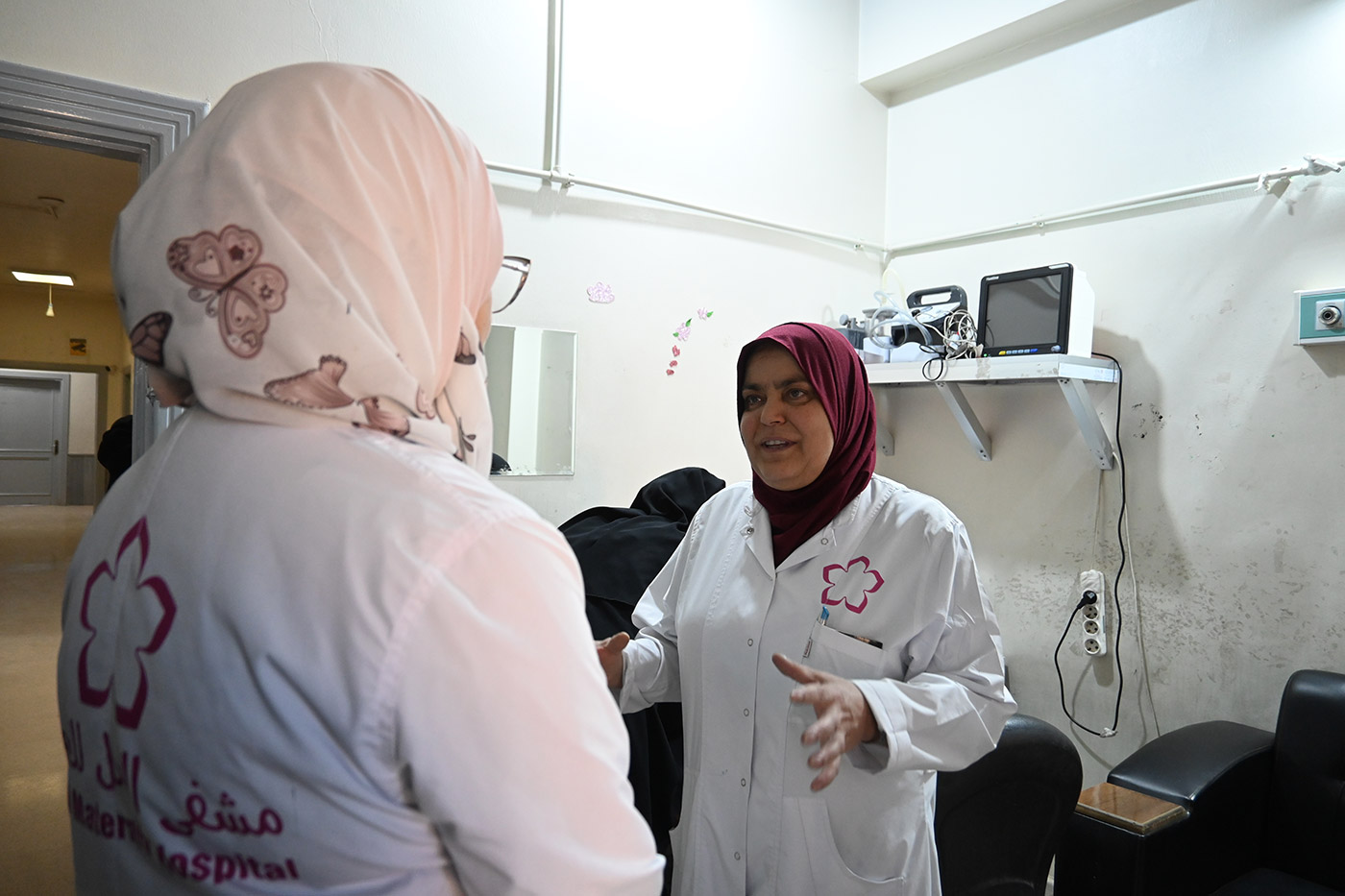 Midwife Hadiya, who supervises the maternity team at Al Amal Maternity and Child Hospital in Azaz, discusses a case with a fellow midwifeMidwife Hadiya Al-Hamouri, 52, has delivered babies during airstrikes, in basements, and under candlelight. She fled her hometown of Hama in 2012 and now lives and works in Azaz.
Midwife Hadiya, who supervises the maternity team at Al Amal Maternity and Child Hospital in Azaz, discusses a case with a fellow midwifeMidwife Hadiya Al-Hamouri, 52, has delivered babies during airstrikes, in basements, and under candlelight. She fled her hometown of Hama in 2012 and now lives and works in Azaz.
“In the past, we used to go house to house to help women give birth,” she says. “It was too dangerous or too far for them to reach a hospital.”
Today, it’s not insecurity keeping women away — it’s funding cuts and facility closures. And while Hadiya has three decades of experience, even she is struggling to meet the growing needs.
“Sometimes we don’t have the tools to test for infections or complications. The need is growing. Displaced women keep coming. They trust us, but we’re running out of support.”
In many parts of Syria, women still arrive late in labor, without any prenatal checkups. The lack of early screening means preventable complications — bleeding, infections, hypertension — can escalate quickly. With trained staff like Hadiya, these risks can be managed. But only if women can access care in time.
Yasmin’s hope
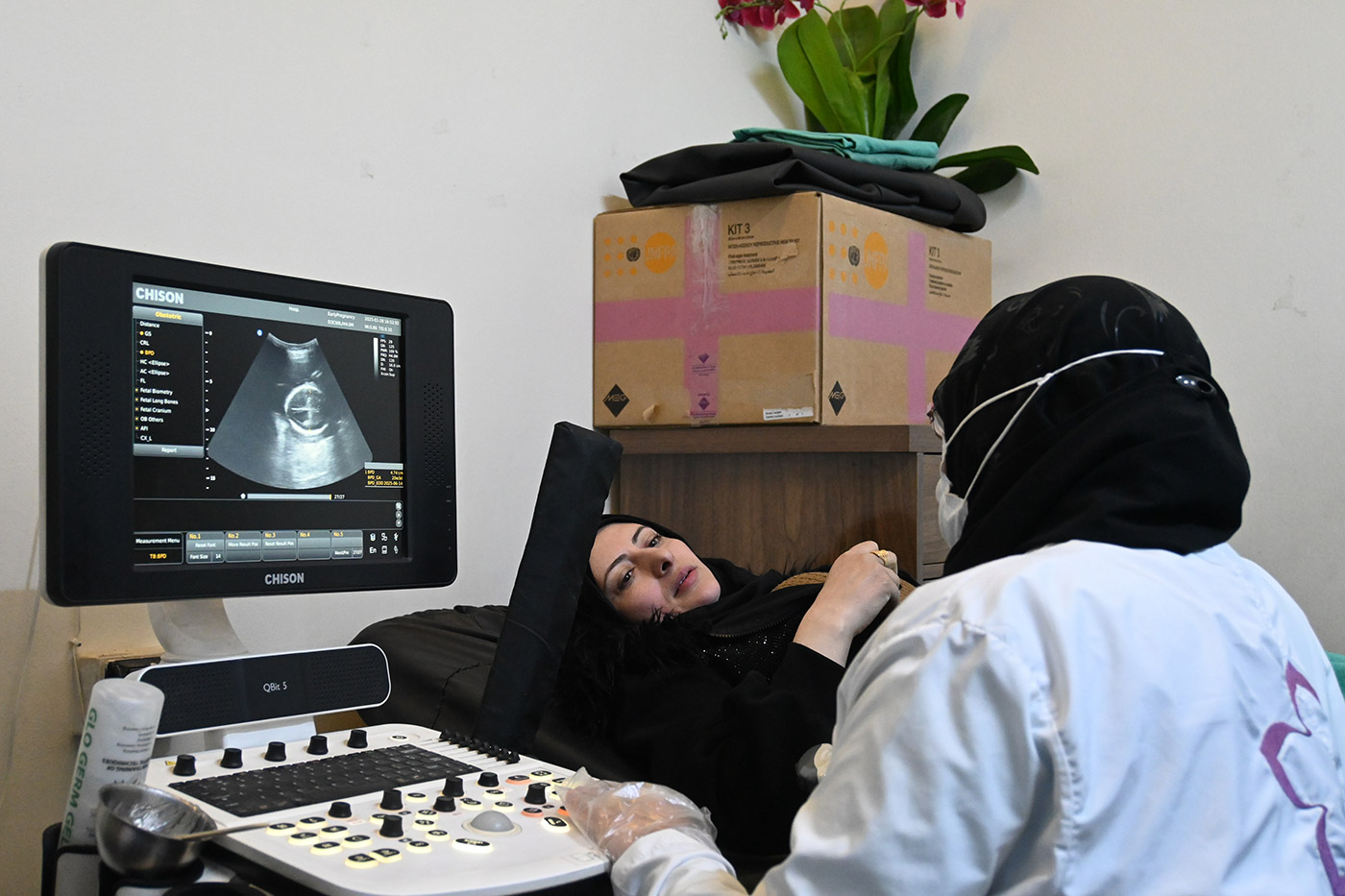 Yasmin undergoes a routine mammogram during her maternity visit at Al Amal Hospital in Azaz. Photo: WHOYasmin, 32, lives in Aleppo city with her sister and their children. She traveled to Al Amal and received the care she needed — respectful, efficient, and free.
Yasmin undergoes a routine mammogram during her maternity visit at Al Amal Hospital in Azaz. Photo: WHOYasmin, 32, lives in Aleppo city with her sister and their children. She traveled to Al Amal and received the care she needed — respectful, efficient, and free.
But back home, things are harder. “You need to know someone to get an appointment,” she says. “Public hospitals are overcrowded. You wait weeks for an appointment. My sister had to pay an ambulance just to get to a center — and then they asked for more money when she arrived.”
It’s not just inconvenient. It’s dangerous. The delays, referral barriers, and high cost of transport put maternal and newborn health at risk — especially for low-income and displaced families.
Yasmin is one of over 273,000 mothers who received infant feeding counselling last year through WHO-supported programmes. But that lifeline may not last. Continued funding cuts could reduce these services when families need them most.
A nurse’s perspective
 Pediatric nurse Razan smiles at the camera between consultations at her clinic in Homs. Photo: WHOIn Homs, pediatric nurse Razan sees the long-term consequences of disrupted care. Her clinic regularly treats children with severe malnutrition — the result of families unable to access early feeding support or afford formula milk.
Pediatric nurse Razan smiles at the camera between consultations at her clinic in Homs. Photo: WHOIn Homs, pediatric nurse Razan sees the long-term consequences of disrupted care. Her clinic regularly treats children with severe malnutrition — the result of families unable to access early feeding support or afford formula milk.
“Formula is expensive. Some mothers use starch water or herbs instead,” she says. The results are visible: thin limbs, pale skin, fatigue, and stunted growth.
With WHO support, over 1 million children under five were screened for malnutrition in 2024. But Razan is quick to emphasize: “If we want to stop malnutrition, we have to support the mother first.” Moreover, WHO’s plans to expand baby-friendly hospitals and establish breastfeeding corners in specialized infant care facilities have been delayed due to funding cuts—leaving mothers and infants even more vulnerable. This underlines the urgent need for sustained investment to protect these essential services.
In rural Hama
 A mobile medical team from Al-Birr Association visits Samira at her home in rural Hama to provide prenatal care. Photo: WHOIn a remote village near Al-Talisiyah, Samira Khaled, 26, had missed her period for four months. She was pale, fatigued, and unsure if she was pregnant — or simply unwell. There was no clinic nearby. She couldn't afford to travel.
A mobile medical team from Al-Birr Association visits Samira at her home in rural Hama to provide prenatal care. Photo: WHOIn a remote village near Al-Talisiyah, Samira Khaled, 26, had missed her period for four months. She was pale, fatigued, and unsure if she was pregnant — or simply unwell. There was no clinic nearby. She couldn't afford to travel.
When a mobile medical team from Al-Birr Association visited her community, they confirmed her pregnancy with an ultrasound. They also diagnosed anemia, prescribed iron and calcium supplements, and scheduled her for follow-up care.
Without that visit, her pregnancy, as well as her anemia, might have gone undetected — putting her at greater risk for complications, including life-threatening post-partum hemorrhage.
A fragile future
What keeps health workers in Syria going is the belief that every life — every mother, every newborn — matters.
But what keeps them up at night is this: Today, Syria’s maternal mortality rate stands at 60 deaths per 100,000 live births and neonatal mortality at 11 deaths per 1,000 live births. Without urgent and sustained support, maternal and newborn care in Syria will unravel. Clinics will close. Ambulances will stop. Hospitals will shutter. And women and children will pay the ultimate price.
On this World Health Day, we’re reminded that ending preventable maternal and newborn deaths isn’t a global ambition. It’s a moral obligation.
In Syria, it’s a promise worth keeping.
 A WHO staff member collects a water sample for testing in Al-Hol camp to help ensure safe drinking water for displaced families. Photo: WHO
A WHO staff member collects a water sample for testing in Al-Hol camp to help ensure safe drinking water for displaced families. Photo: WHO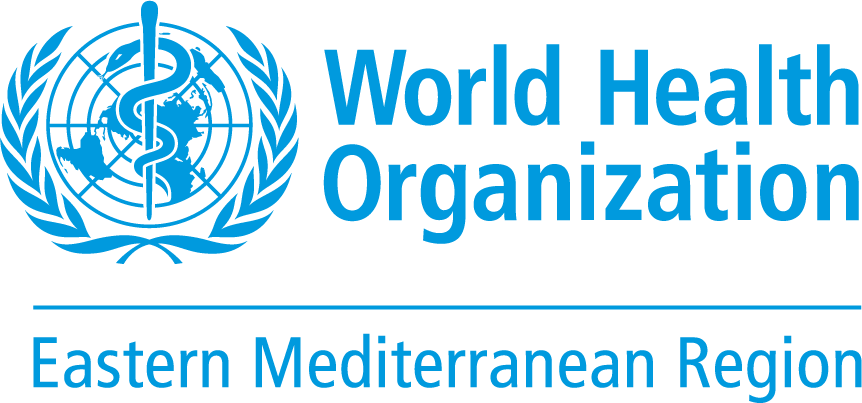





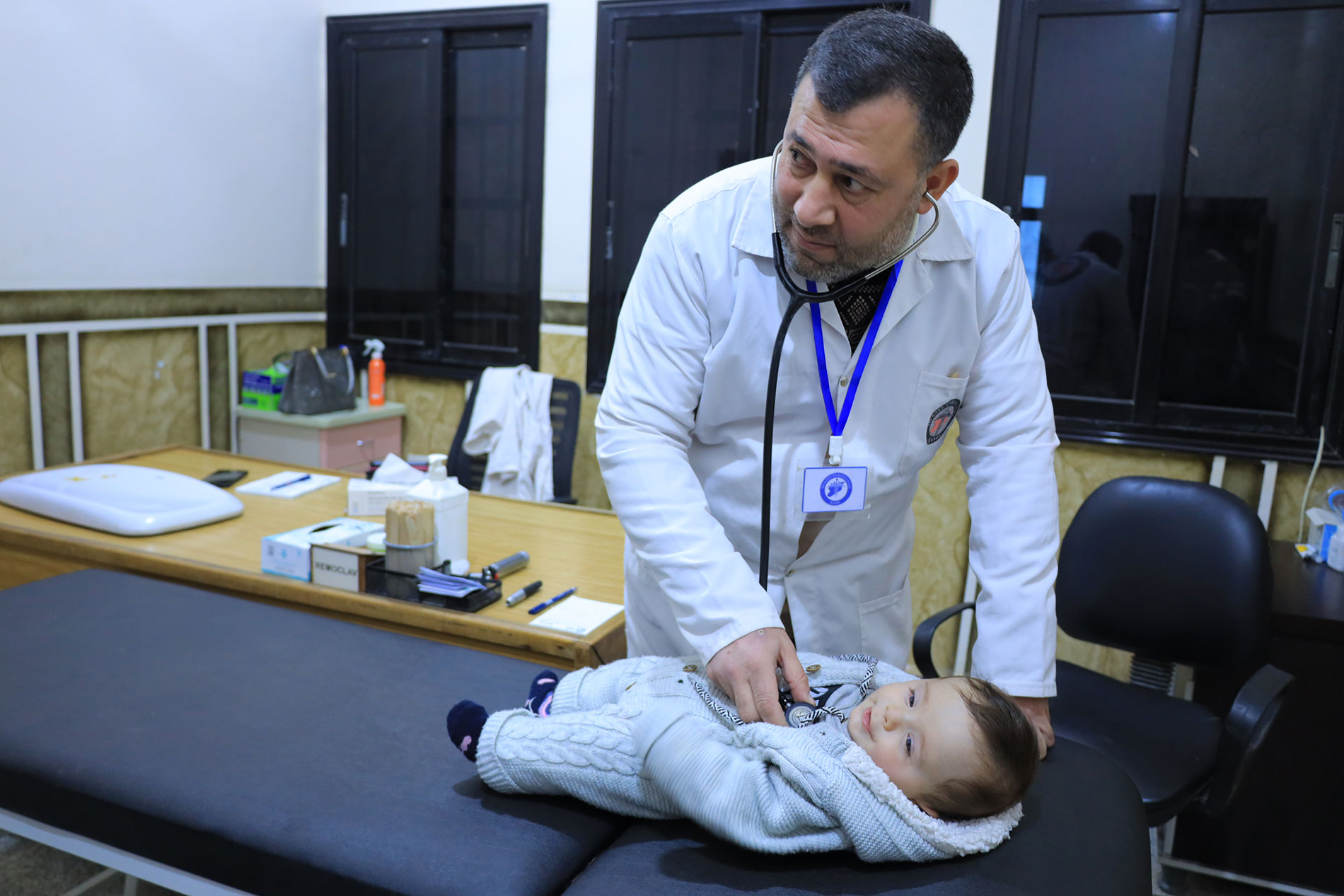
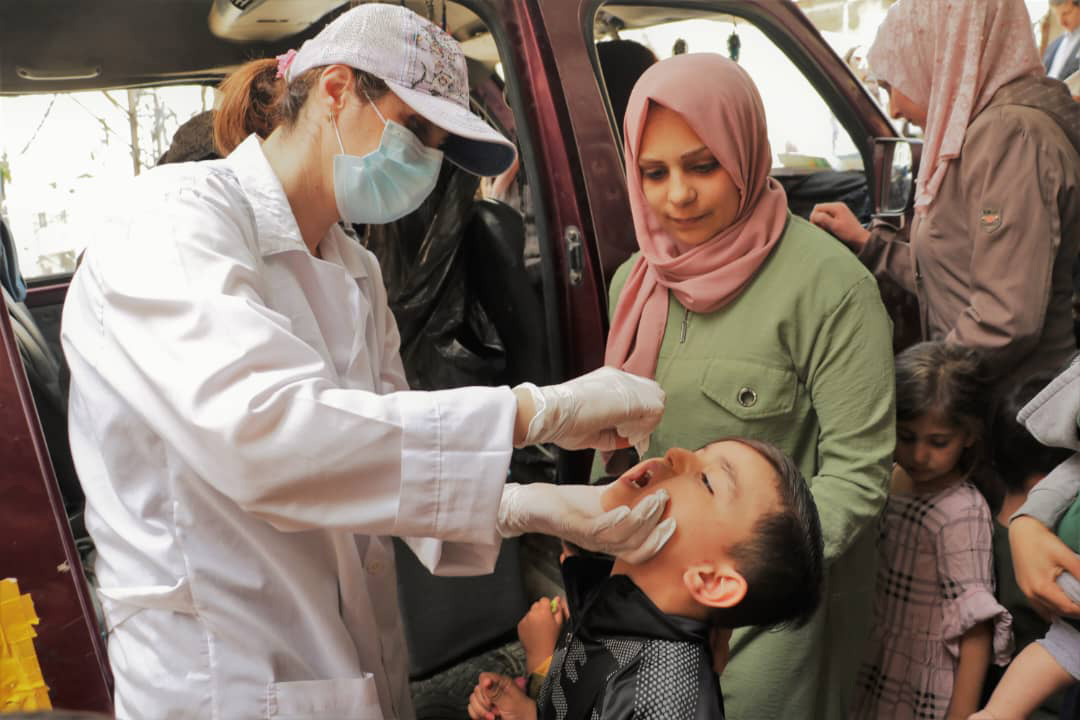 21 April 2025, Damascus, Syrian Arab Republic – The United Nations Children’s Fund (UNICEF) and the World Health Organization (WHO), in collaboration with Gavi, the Vaccine Alliance, are supporting a nationwide immunization campaign led by the Ministry of Health to mark World Immunization Week in Syria, running from 21 to 30 April.
21 April 2025, Damascus, Syrian Arab Republic – The United Nations Children’s Fund (UNICEF) and the World Health Organization (WHO), in collaboration with Gavi, the Vaccine Alliance, are supporting a nationwide immunization campaign led by the Ministry of Health to mark World Immunization Week in Syria, running from 21 to 30 April. 




